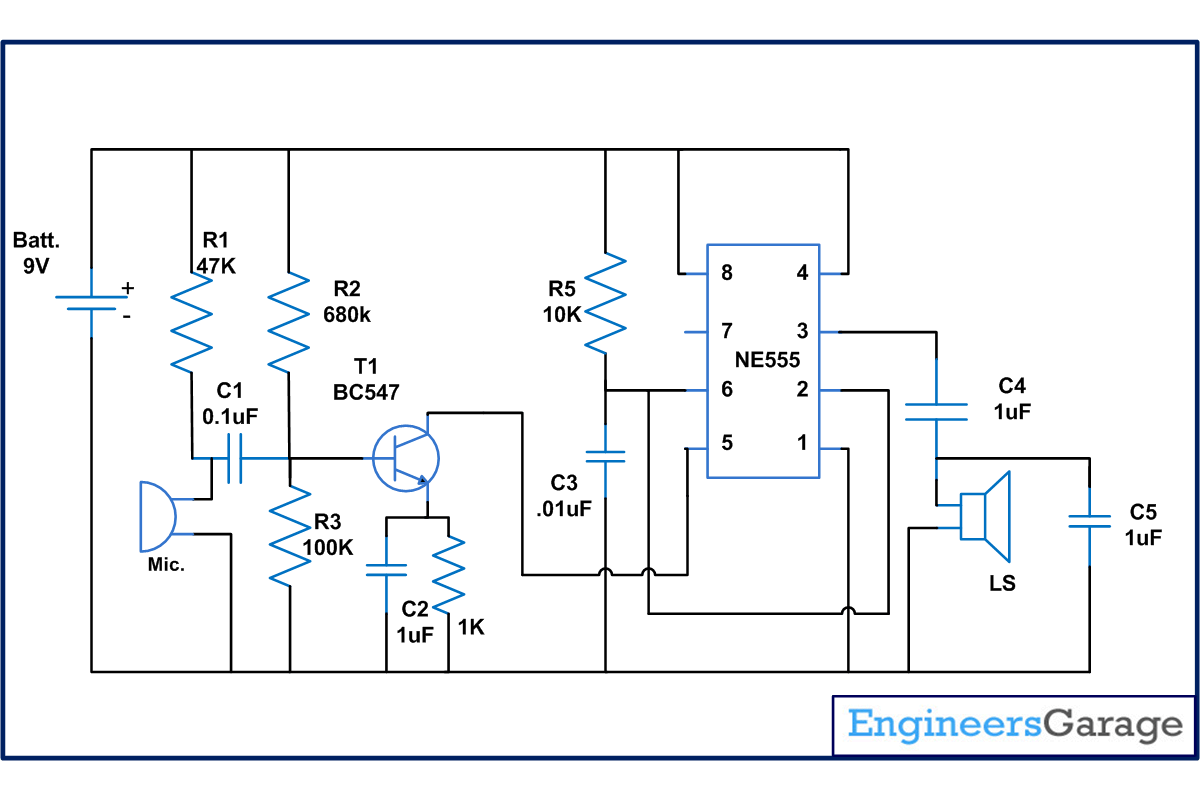In its most simplistic form an amplifier can be built with a single 555 timer. In this project, a 200mA of current capability is enough to drive a small speaker, which makes it a good replacement for a low power amplifier. But when more power is needed to allow listening music in a small room then a high power stage needs to be added with it.
The function of 555 timer is very much comparable to pulse width modulation (PWM). The value of the component used in the circuit causes 555 to oscillate at approximately 66 KHz. As we know, speaker does not respond to this much high frequency. Instead it responses to the usual CD value of the modulated output and explains the concept of PWM.
The project is based on the concept of condenser MIC. The MIC is used as sensors to sense the incoming audio signals and convert them to appropriate electrical signals. The output of the MIC is then passed to the transistor T1 passing through a capacitor C1. This capacitor is used to block the DC component of the signal. Resistor R1 is also used in the circuit which provides the required biasing to the condenser microphone. The biasing configuration of transistor T1 is from collector to the base which is accomplished through resistance R2, providing negative feedback to the base of T1.
When the power is supplied to the circuit the devices connected to it remains ideal as the voltage through pin2 of the IC is zero. But when anyone speaks in front of the MIC, pin2 receives the trigger signal. Pin3 gets the high input due to which speaker gets turned on. At this point, the voltage should be zero at pin6.
When anyone speaks in front of the MIC, very weak signals are produced. So a transistor is required to amplify these weak signals before they are fed to 555 timer. As soon as the transistor reaches the saturation level it provides a high pulse to pin5 (CTRL). As a result the speaker that is connected to it starts sounding.
Circuit Diagrams
Project Components
Filed Under: 555 Timers, Electronic Projects



Questions related to this article?
👉Ask and discuss on EDAboard.com and Electro-Tech-Online.com forums.
Tell Us What You Think!!
You must be logged in to post a comment.